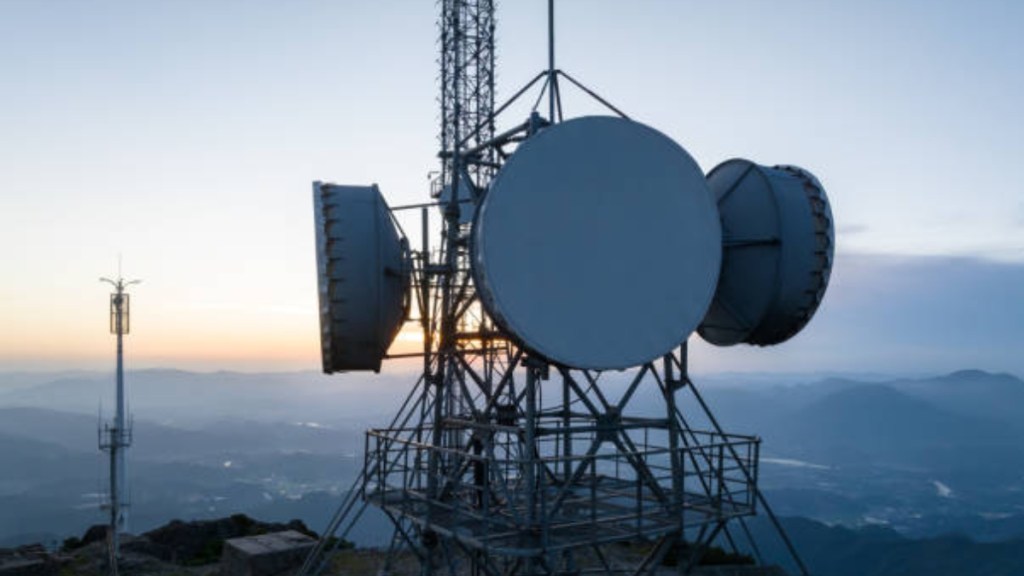Public policy debates often centre around the issue of level playing field. The term has been the most misused and abused as parties with vested interest often invoke it to prove their case even if the comparisons drawn are as different as chalk and cheese. The current debate involving satellite communication services and terrestrial networks (mobile services), where telecom operators and technology firms are pitted against each other, best illustrates this syndrome.
In post-liberalisation India, it’s arguably the telecom operators who have misused and abused the term, level playing field, the maximum number of times. They invoke it if there is any remote possibility of a disruption to their business model.
What else can explain their continuous rant that over-the-top (OTT) players should be made to share revenues with them because data and video constitutes 80% of traffic on their network. The logic is weird: One needs to continuously invest in networks to handle vast amounts of traffic, and they have paid millions to buy spectrum. Why should OTTs ride for free on the highways created by them? If this sounds logical even for a moment, consider the converse: If 80% of traffic constitutes data and video, then the bulk of revenues are also coming from this stream. If this stops, revenues will also dry up.
Let’s spare this debate and simply ask, who shifted the entire telecom pricing from voice to data? The telcos, without being forced by anyone. So, if you change the model by pricing data at dirt cheap rates, making voice free, obviously data and video traffic will rise.
Telcos are raising the same kind of weird logic vis-à-vis the allocation of spectrum for satellite communication services. The logic is, satellite communication players may at some point provide services in urban areas, which could be akin to those provided by them, hence spectrum should be allocated through auctions to them too.
Are satellite and terrestrial services the same? Not really. As telecom and technology expert Parag Kar explains in his paper on the subject, terrestrial networks can serve both hand-held and rooftop devices seamlessly. However, satellite services face significant hurdles for mobile devices and fail to match the functionality of their terrestrial counterparts. According to him, the only feasible overlap for satellite and terrestrial services lies in fixed wireless access (FWA) solutions (broadband services).
This means that for mobile handsets, satellite services cannot truly replicate what terrestrial networks operated by existing telecom players offer. This is because mobile handsets cannot efficiently receive satellite signals at high frequencies, so a direct competition with traditional mobile networks is not possible.
Now let’s examine the areas where there’s an overlap: FWA solutions. Kar explains that here too satellite providers face significant challenges compared to terrestrial networks because their terminals are far more complex due to their need to track fast-moving satellites in low earth orbit, whereas cellular base transceiver stations (BTS) remain stationary.
Further, satellites operate 600-1,200 kilometres away, while terrestrial BTS are just a few kilometres or even a few hundred metres away. Due to this distance disparity, satellite broadband services offer lower data speeds than terrestrial networks. This also makes satellite terminals more expensive and therefore such services are used where terrestrial networks are not available (remote hilly regions, seas, forest, desert, etc.). This is reflected in the numbers.
For instance, India alone has over 29 million base stations and 800,000 towers. In stark contrast, Elon Musk’s Starlink has only 7,000 satellites globally, with plans to expand to 40,000.
The technical difference and constraints are reflected in tariffs also. While mobile operators work on the model of high volumes and low average revenue per user (Arpu), it’s the other way round for satellite players. For instance, Starlink’s Arpu is about $100, much higher than the $10-15 that mobile operators charge for FWA services in India.
Thus, it’s safe to conclude that satellite services and terrestrial networks are complementary and do not compete with each other. It’s also clear that the issue of level playing field being raised by telecom operators like Reliance Jio and Bharti Airtel does not hold water.
Telecom operators should realise that the era of regulatory battles is over. We are living in an age where a regulatory maze can no longer be used to block innovation. Red Hat chief technologist Azhar Sayeed’s suggestion that telcos need to emerge as technology companies, from telco to a techco, is worth considering here.
Instead of opposing anything that can even remotely emerge as a challenge, telecom operators need to ask themselves when was the last time they came out with something really innovative. Nothing comes to mind after the Jio data revolution of 2016-17. All recent innovations are limited to enhancing their Arpu by measures addressing how feature phone users can be migrated to smartphones; prepaid users moved to postpaid; and postpaid customers made to buy all other services like direct-to-home, fixed broadband, and OTT bundling under common billing.
The government and the telecom regulator should not succumb to lobbying in the name of level playing field and burden satellite service providers with auction-based spectrum fees. Any such move will limit their potential, reduce competition, and deny consumers innovative solutions. It’s perfectly fine to have different regulatory norms for different service types and businesses.
Raising issues of level playing field where none exist is not only superfluous but also mischievous.
